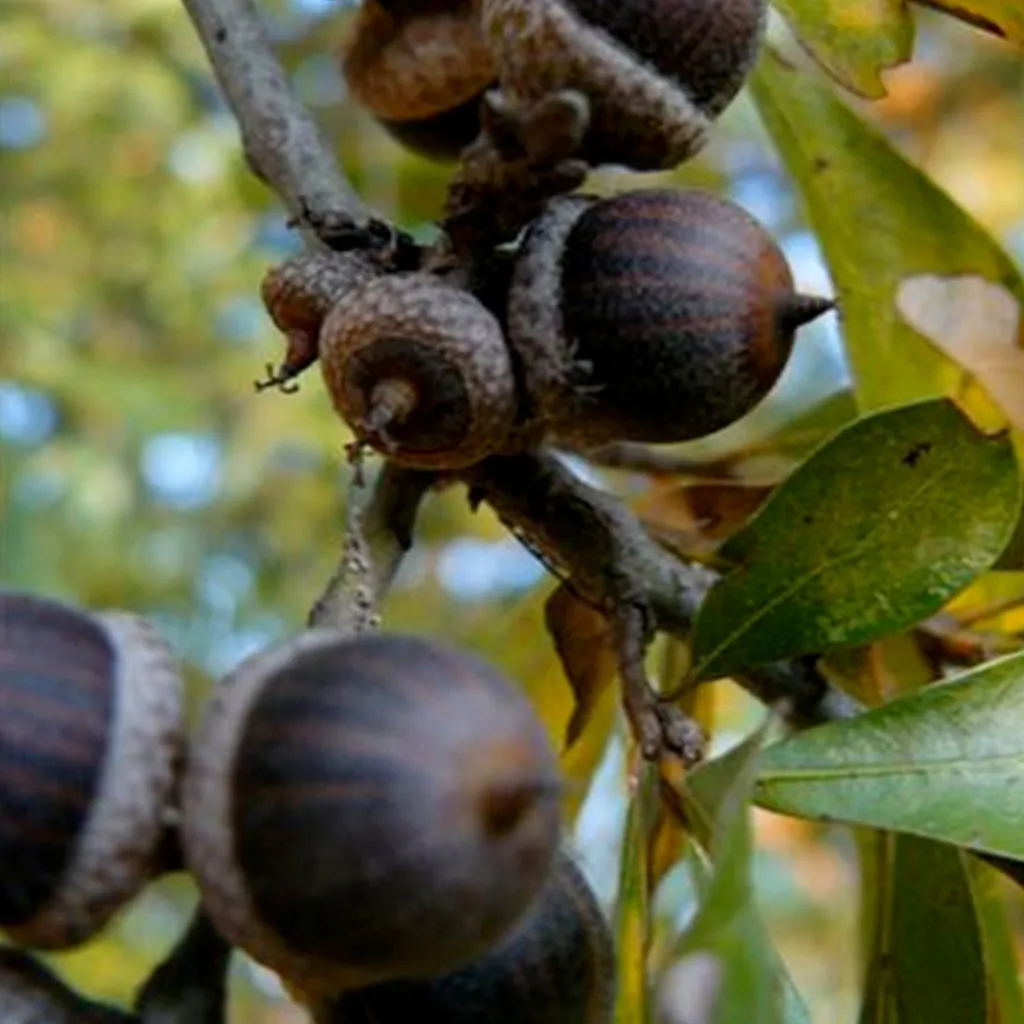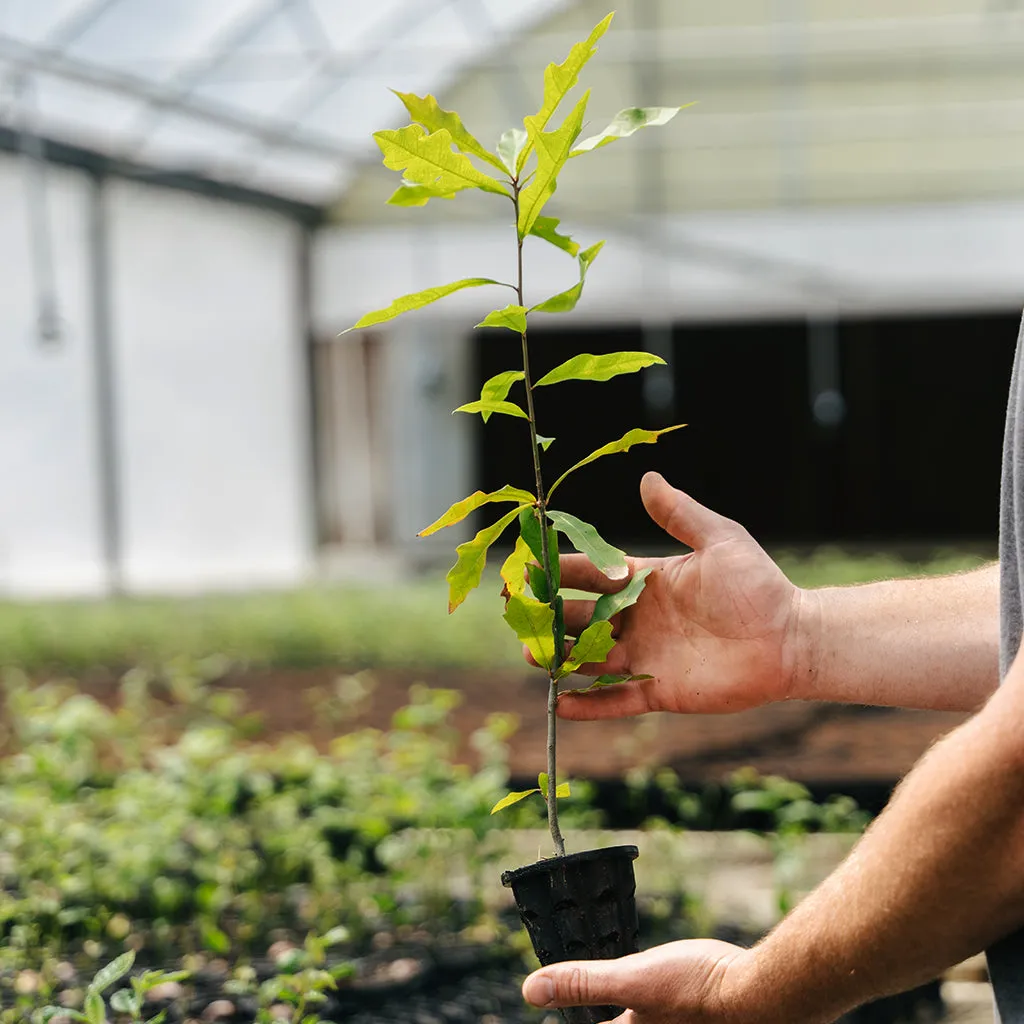Water oak is a trooper and likely the most underrated of all the oaks. Naturally occurring in the bottoms, water oak commonly creeps its way uphill via blue jays and squirrels. To us that means it will grow and produce regularly from the best to not so great sites. No wonder it’s so common along sidewalks, parks, urban areas, etc. The monstrous trees lining Grand Boulevard in the delta duck town of Greenwood, MS are all water oaks.
Water oaks produce a small acorn that ducks prefer, and mature trees can tolerate flooding for a month or two just about every winter. Due to their extremely high fat content (@20%), deer rake them in also. Although an early dropper (usually mid October to early November), their hard shell makes it a great keeper for when food and a good huntin’ spot is needed the most. It always seems the water oaks have an uncanny ability to produce on years when none of the other oaks are producing. Insurance for your crop! When in doubt, plant a water oak.
| Type: Zone: | Red Oak section 6 - 9 |
| Soil pH: | 4.5 - 6.5 |
| Mature Height: | 90' |
| Wildlife Value: | Important cover, habitat, and food for wildlife. Acorns eaten by squirrel, wild turkey, and waterfowl. Some browse by deer. |
| Site Preference: | Naturally occurs on moist, alluvial soils along streams and rivers, but tolerates and routinely produces mast on a variety of sites. |
| Nut Maturity Date: | October to early November |
| Alias: | Possum Oak, Spotted Oak, Pin Oak, Red Oak |













